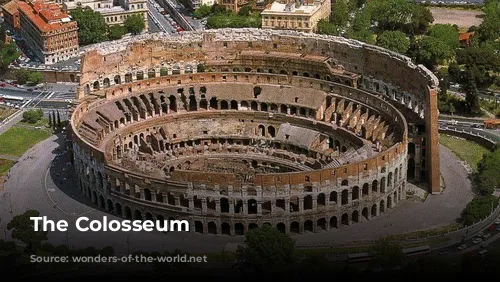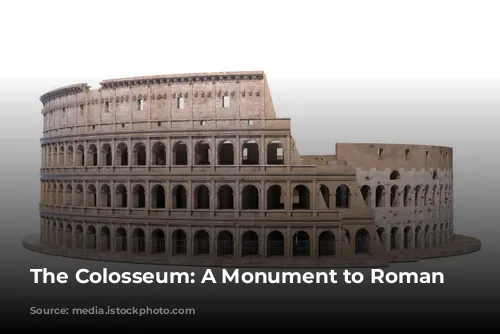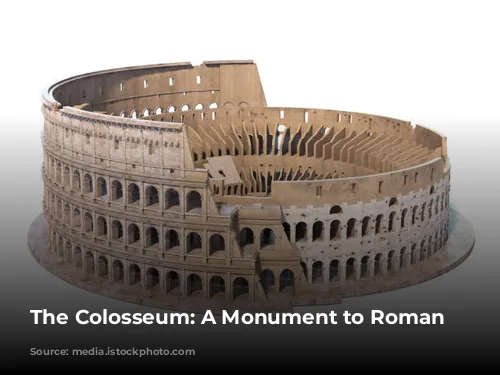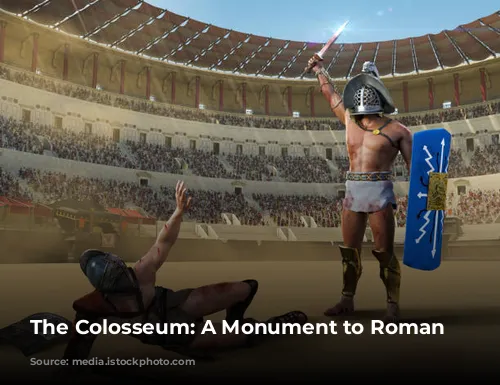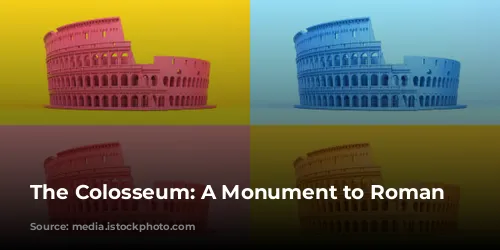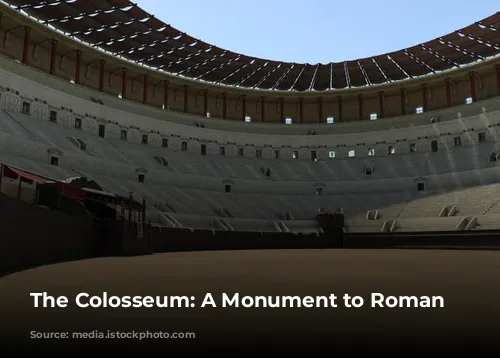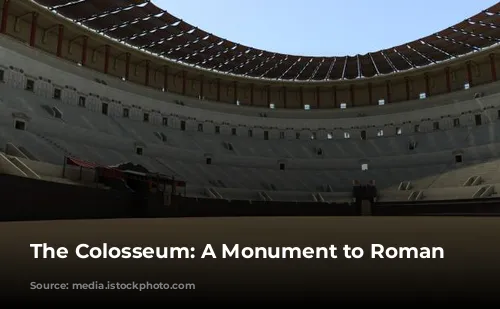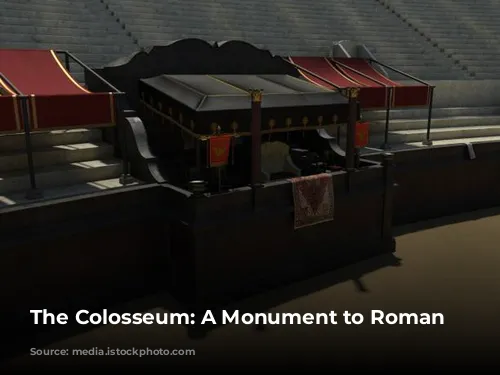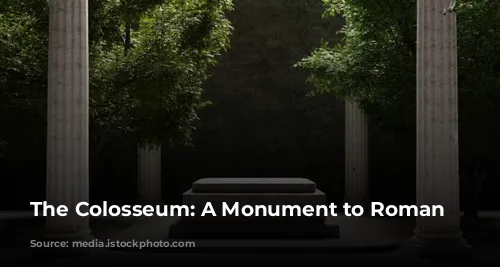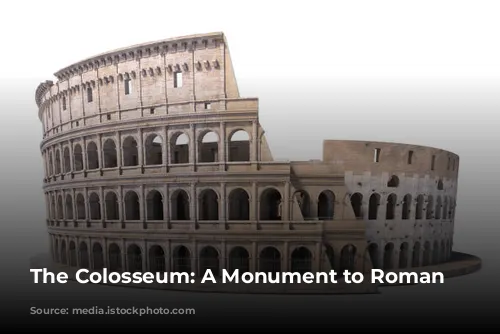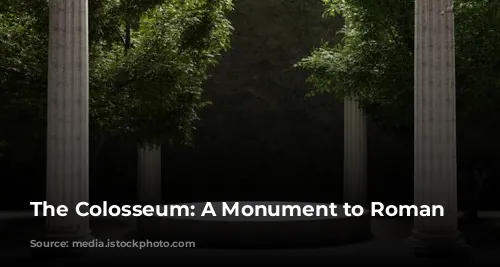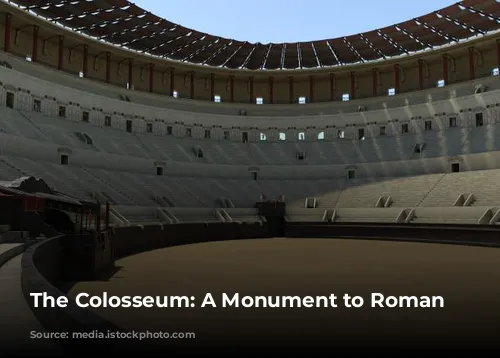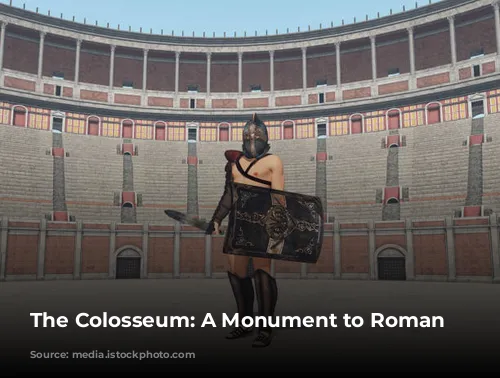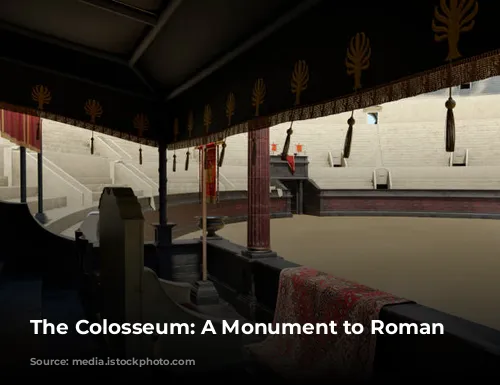The Colosseum stands as a testament to the grandeur and ambition of the Roman Empire. This monumental amphitheater, larger than any other built by the Romans, dwarfs even the structures erected in the far-flung provinces of North Africa and Eastern Europe. The sheer scale of the Colosseum was a deliberate statement, a resounding declaration of Rome’s supremacy and the empire’s unparalleled power.
The Colosseum’s Form: An Ovoid Masterpiece
While the Colosseum appears circular from a distance, its true shape is a precise ovoid, similar to an egg. This scientific term describes its elliptical design, with several distinct centers. The dramatic elongation of the Colosseum is particularly noticeable, with a length of 187.75 meters and a width of just 155.60 meters, creating a striking 1.2 ratio. Rising to a height of 50.75 meters from the present ground level, the Colosseum was an awe-inspiring spectacle, its summit once adorned with towering masts.
A Glimpse Inside the Colosseum
The Colosseum’s design is both practical and impressive. It comprises a central arena, surrounded by tiered terraces and a grand facade. Today, the terraces remain intact while the facade is incomplete, revealing the complex structure of the building. The arena itself, measuring 83 meters long and 48 meters wide, is also elongated, enhancing the overall ovoid shape of the entire structure.
Interestingly, the ovoid shape wasn’t unique to the Colosseum. Roman architects consistently employed this design for their amphitheatres, suggesting a deliberate aesthetic preference.
The Colosseum’s Architectural Marvel
The Colosseum’s three tiers of arcades are a testament to Roman engineering prowess. Each arcade, measuring 4.2 meters wide, rises to a height of 6.45 meters, except for the lower tier, which stands at a majestic 7.05 meters.
A Stage for Spectacle: The Colosseum’s Immense Capacity
The Colosseum was designed to hold an enormous crowd, housing between 75,000 and 80,000 spectators, a number comparable to the population of a modern mid-sized city. On days of public entertainment, Rome’s population would converge on the Colosseum, highlighting its significance as a center for spectacles that captivated the entire city.
A Hierarchy of Seating: Reflecting Roman Society
The Colosseum’s seating arrangements reflected the rigid social hierarchy of ancient Rome. Social status determined the location of each spectator, ensuring that the most prominent citizens occupied the best seats.
The Colosseum in Context: A Comparison of Roman Amphitheatres
To truly grasp the Colosseum’s impressive scale, it’s helpful to compare it to other Roman amphitheatres. The amphitheater at Leptis Magna, built in 56 AD, measures 121 x 111 meters, with an arena spanning 57 x 47 meters. This impressive structure is located on the North African coast of present-day Libya.
The amphitheater at Pompeii is one of the oldest permanent Roman amphitheatres, constructed in 80 BC. Measuring 135 x 104 meters with a 67 x 35 meter arena, it stands as a testament to the Romans’ early mastery of amphitheater construction. Fortunately, the Pompeii amphitheater remains remarkably well-preserved, providing a glimpse into the past.
In France, the arena of Nîmes, built in 90 AD, was inspired by the Colosseum. Although grand, it falls short of the Roman masterpiece, measuring 133 x 101 meters with an arena of 69 x 38 meters.
The Colosseum’s Enduring Legacy
The Colosseum’s enduring legacy lies in its architectural brilliance, its vast scale, and its historical significance. This magnificent structure continues to captivate the imagination, offering a window into the grandeur of the Roman Empire and the spectacle of Roman life.
